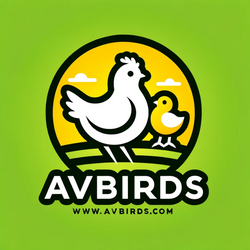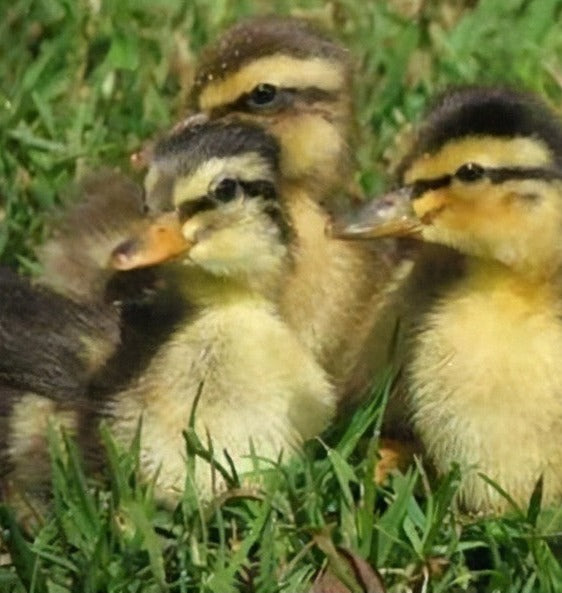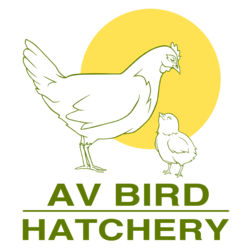AV Bird Hatchery
Mallard Ducks (Free Shipping)
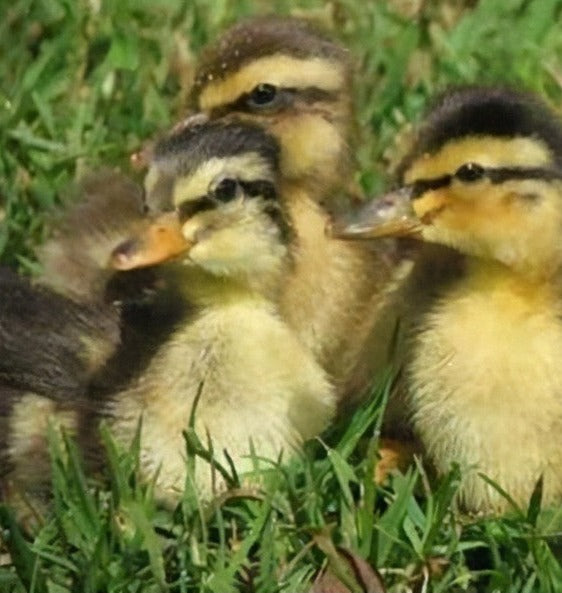

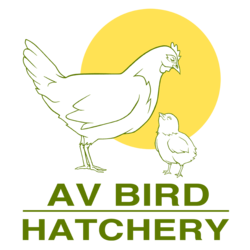
Baby Ducklings Straight Run Only
The mallard is a medium-sized waterfowl species that is often slightly heavier than most other dabbling ducks. It is (20–26 in) long – of which the body makes up around two-thirds – has a wingspan of (32–39 in) and weighs (1.5–3.5 lb). Among standard measurements, the wing chord is (10.1 to 12.0 in), the bill is (1.7 to 2.4 in), and the tarsus is (1.6 to 1.9 in).
The breeding male mallard is unmistakable, with a glossy bottle-green head and a white collar that demarcates the head from the purple-tinged brown breast, grey-brown wings, and a pale grey belly. The rear of the male is black, with white-bordered dark tail feathers. The bill of the male is a yellowish-orange tipped with black, with that of the female generally darker and ranging from black to mottled orange and brown. The female mallard is predominantly mottled, with each individual feather showing sharp contrast from buff to very dark brown, a coloration shared by most female dabbling ducks, and has buff cheeks, eyebrow, throat, and neck, with a darker crown and eye-stripe.
Both male and female mallards have distinct iridescent purple-blue speculum feathers edged with white, which are prominent in flight or at rest but temporarily shed during the annual summer molt. Upon hatching, the plumage of the duckling is yellow on the underside and face (with streaks by the eyes) and black on the back (with some yellow spots) all the way to the top and back of the head. Its legs and bill are also black. As it nears a month in age, the duckling's plumage starts becoming drab, looking more like the female, though more streaked, and its legs lose their dark grey coloring. Two months after hatching, the fledgling period has ended, and the duckling is now a juvenile.
The duckling is able to fly 50–60 days after hatching. Its bill soon loses its dark grey coloring, and its sex can finally be distinguished visually by three factors:
1) the bill is yellow in males, but black and orange in females;
2) the breast feathers are reddish-brown in males, but brown in females; and
3) in males, the center tail feather (drake feather) is curled, but in females, the center tail feather is straight. During the final period of maturity leading up to adulthood (6–10 months of age), the plumage of female juveniles remains the same while the plumage of male juveniles gradually changes to its characteristic colors. This change in plumage also applies to adult mallard males when they transition in and out of their non-breeding eclipse plumage at the beginning and the end of the summer moulting period. The adulthood age for mallards is fourteen months, and the average life expectancy is three years, but they can live to twenty.
Several species of duck have brown-plumaged females that can be confused with the female mallard. The female gadwall (Mareca strepera) has an orange-lined bill, white belly, black and white speculum that is seen as a white square on the wings in flight and is a smaller bird. More similar to the female mallard in North America are the American black duck, which is notably darker-hued in both sexes than the mallard, and the mottled duck, which is somewhat darker than the female mallard, and with slightly different bare-part coloration and no white edge on the speculum.
Owing to their highly 'malleable' genetic code, mallards can display a large amount of variation, as seen here with this female, who displays faded or 'apricot' plumage.
In captivity, domestic ducks come in wild-type plumages, white, and other colors. Most of these color variants are also known in domestic mallards not bred as livestock, but kept as pets, aviary birds, etc., where they are rare but increasing in availability.
A noisy species, the female has the deep quack stereotypically associated with ducks. Male mallards make a sound phonetically similar to that of the female, a typical quack, but it is deeper and quieter compared to that of the female. When incubating a nest, or when offspring are present, females vocalise differently, making a call that sounds like a truncated version of the usual quack. This maternal vocalisation is highly attractive to their young. The repetition and frequency modulation of these quacks form the auditory basis for species identification in offspring, a process known as acoustic conspecific identification. In addition, females hiss if the nest or offspring are threatened or interfered with. When taking off, the wings of a mallard produce a characteristic faint whistling noise.
Due to the variability of the mallard's genetic code, which gives it its vast interbreeding capability, mutations in the genes that decide plumage color are very common and have resulted in a wide variety of hybrids, such as Brewer's duck (mallard × gadwall, Mareca strepera).
Please Note: We are unable to ship mallard ducks to the states of Florida, Arkansas, or North Dakota.
